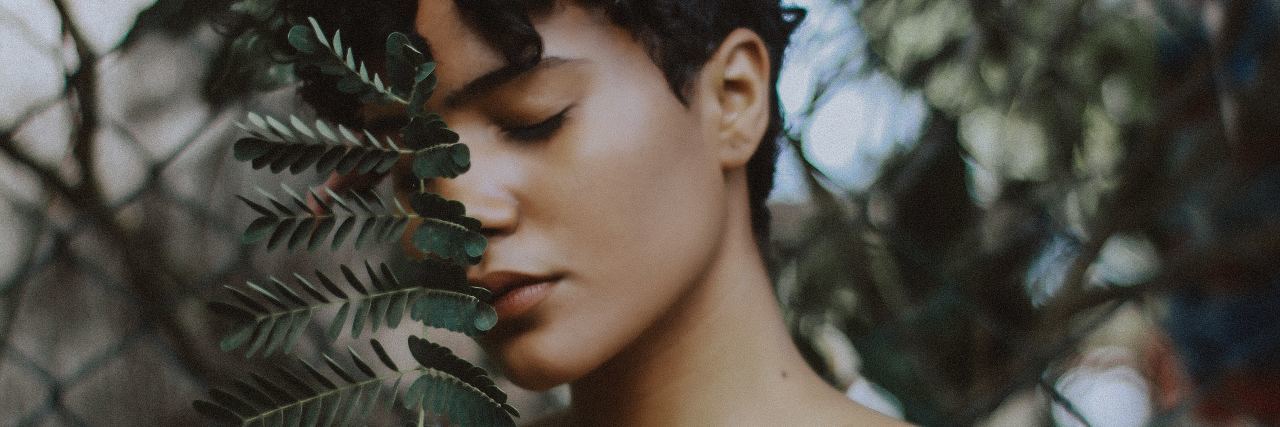Why the Hardest Thing I’ve Done in Trauma Therapy Is Realize I No Longer Need It
Editor's Note
Editor’s note: Names have been changed to protect privacy.
In my many years of therapy, I’ve faced things difficult beyond measure again and again. But the hardest thing I’ve ever done is coming to the realization I no longer need to be in therapy.
Leaving my therapist was the scariest part of my healing journey. It was like I finally said I no longer needed the safety net under my tightrope, but truthfully, I’ve been so in balance that I haven’t needed it for quite some time. I’m walking on my own, I have my footing, I know the steps, and my safety net has only still been there out of fear of falling, rather than the actual possibility of it.
When I first met my therapist Maxine, who specializes in trauma survivors, four years ago, the first thing she asked was why I had been in therapy for so many years and had never addressed any of my trauma. My response was that I didn’t have trauma. My history, my post-traumatic stress disorder (PTSD), my daily nightmares, panic attacks, self-destructive behavior and unhealthy coping mechanisms told a different story.
But this is not about the trauma; this is about the healing.
Healing is like building a house, and at the beginning of my healing journey, the only tool I had at my disposal was a crumbling rock. My rock was repression. I repressed feelings, memories and the ability to truly see myself, and how badly my house was in shambles.
Maxine led me to my first real tool to build my house, and it was talking. Talking about what had happened to me, and admitting that maybe, just maybe, I had some trauma in my past. Therapists are like the person who works at the hardware store; they can lead you to the tools you need, but you have to make the choice to pick them up and use them. Using these tools properly takes learning, patience and practice, and these are all things you only gain by experience. Talking was difficult in the beginning, but as I continued to do it — as I used my tool and practiced — it became easier over time.
However, as I continued to use my tool, as I continued to heal and build my house, I realized I needed more tools, more experience and more patience. I stopped relying on my crumbling rock, I used the tool I had and I trusted that Maxine knew what tools would help me to build my house faster and more efficiently. Over time, I gained more tools: healthy coping mechanisms, patience, experience, forgiveness of self, forgiveness of others and setting healthy boundaries.
The thing about healing is that the more you do it, the more experience and practice you have with it. The longer you heal, the more proficient you get at healing. Soon I had so many tools, I didn’t need them all. I knew which worked best for me, and I knew which ones I struggled with using. Healing is a practice, not a destination.
It took me years to build my house. It took me years to get to a place where I felt healed and complete. I would walk into Maxine’s office and chit-chat because, as anyone who has ever lived in a house knows, there is always work to be done. However, I was healing as I went along, rather than waiting for my house to fall apart. I was visiting the hardware store person for the comfort of knowing they were there, rather than because I needed them.
Then the realization hit me like a freight train. I had all the tools to continue healing and keep my house in order. As things broke down in my house, as trauma and painful situations arose, I knew how to heal from them because I had already had so much practice and I had the tools to repair my house. If I lost a tool, I knew where to find it, even without the help of my therapist.
I was terrified.
The thought of being on my own in the world without the safety of someone who knew about healing was terrifying, and I wasn’t ready to face building my house on my own. Except I was. I was ready and had been ready for a long time because I had been maintaining my house for a long time. I just needed to know I was ready.
Fear is a healthy and normal reaction to what feels like the unknown. So is being sure. I was sure I had all the tools, all the practice and all the experience I needed to move forward without Maxine, and that it was time I let go. I walked into her office and told her I was now OK with that being our last visit together. We hugged. We said we’d miss each other. We parted knowing I would be more than just OK; I would be fantastic.
Knowing my experience with gathering my tools, using them, gaining practice and experience with them, and being able to use them uncoached was an important part of my healing journey. The fear melted away and was replaced with pride I had come this far.
My house is built. Sometimes a gutter leaks or the shingles fly off during a storm, but I have the tools to repair those things when they happen. They’re tools and experience I’ll carry with me for the rest of my life.
Healing is an ongoing process, a journey, a practice, a belief.
I believe in my ability to heal, and healing has brought me to believing in me.
Photo by Caique Silva on Unsplash

